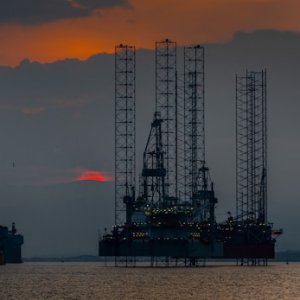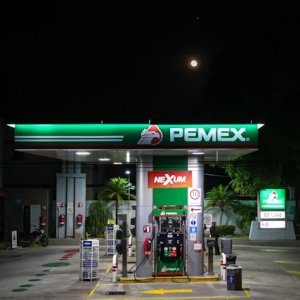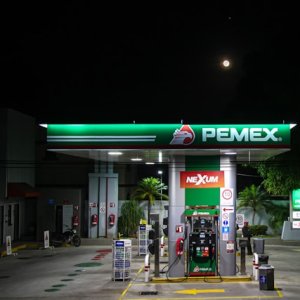
Deepwater Continues on Track
 By Pedro Alcalá | Senior Journalist & Industry Analyst -
Tue, 07/20/2021 - 17:28
By Pedro Alcalá | Senior Journalist & Industry Analyst -
Tue, 07/20/2021 - 17:28
Hopes that deepwater operations would gain in relevance have been a part of Mexico’s oil and gas industry since the passing of the Energy Reform. When President Andrés Manuel López Obrador announced his intentions to divest PEMEX from these activities, it appeared to shoot down these ambitions. That now seems an erroneous assumption.
In fact, deepwater drilling activities ramped up in 2020, even with the pandemic, with a record number of exploration plans approved by CNH. Almost half of all of Mexico’s conventional prospective resources are contained in deepwater assets, making them an integral part of the country’s oil and gas future, according to MBN experts.
“Deewater is a great example of the fact that we continue to believe that Mexico’s offshore energy industry has enormous potential. Clearly the industry interest is there with super majors, NOCs and others developing exploration plans and drilling wells. These companies can and will unlock major discoveries in due time, assuming that the business climate remains supportive,” says Timothy Duncan, CEO of Talos Energy.
IOC Success Paving the Way
Deepwater success can be framed by the activities of some of the most prominent operators in the field. One of the most successful oil giants involved in the Mexican deepwater arena is Malaysia’s PETRONAS, also known in Mexico by its active subsidiary PC Carigali. PETRONAS has a total of 10 blocks in Mexico, five as an operator and five as a partner. These blocks are within the main three basins in the Gulf of Mexico: one block in the Perdido Basin, three blocks in the Mexican Ridges and six blocks in the Salina Basin.
Country head Emry Hisham Yusoff describes PETRONAS’ entry to Mexico’s deepwater arena as a strategic fit for the company’s business growth, focusing on upstream exploration opportunities and a portfolio with potential to provide long-term value. “Our partnership with CNOOC will bring together our capabilities and expertise for a successful collaboration toward developing this basin,” Yusoff says.
PETRONAS began its offshore drilling campaign with the Moyote-1 well in Block 6, according to its development plan with partner ECOPETROL. The companies successfully spudded the well in mid-November 2020 and the exploration campaign was estimated to last for approximately 90 days.
Its activities illustrate how deepwater activities provided a platform for significant foreign investment during the pandemic, which contributed to general positive evaluations of the industry’s attractiveness and legal certainty throughout the challenging times. “Currently, PETRONAS Mexico is one of the most active oil and gas companies in the country. To date, the company and its partners have completed drilling of five deepwater exploration wells, with two more wells expected to be spudded in the near future,” says Yusoff.
PETRONAS’s future plans for Mexico include a focus on the 10 blocks the company holds and the continuous search for new opportunities that suit its portfolio, which might increase in the secondary market given the fact that some IOCs, such as Equinor, are letting go of their Mexico deepwater assets.
PETRONAS was also the first IOC to establish a drilling base in the port city of Coatzacoalcos, Veracruz. Yussof believes that “the city’s strategic location and infrastructure will become even more relevant with the Transisthmic Corridor project that will connect the Gulf of Mexico and the Pacific Ocean.” PETRONAS also operates its deepwater well Yaxchilan Este from Port Pajarito.
Mexico’s major shallow-water private operators are also beginning to notice the country’s many deepwater opportunities. Talos is one of many shallow water American operators in Mexico that already has extensive experience with deepwater production on the American side of the GOM. “The potential (in Mexico’s deepwaters) is significant and could be a major source of job creation, revenue and physical commodity supply for Mexico for decades if successful,” says Duncan.
Safety, Talent Concerns
As PEMEX moves away from deepwater activities, it is expected that the subsector’s safety standards will become defined by the private sector. Although this creates concerns regarding transparency, a great example of the way in which this approach is guaranteeing world-class standards and best industry practices is the classification, verification and independent analysis of BHP’s Trion FPU carried out by DNV. PEMEX is still involved in the Trion farmout project; at the time of its original launch, the project became the first partnership of this kind between PEMEX and a private company, as well as the first deepwater development in Mexico. Now, this agreement represents a unique model for collaboration and verification of safety standards and operational working conditions between entities in the public and private sectors, as it will involve a complete coordination between DNV, BHP, PEMEX and ASEA.
Eckhard Hinrichsen, Mexico Country Manager of DNV, detailed the extent of the project. “Our involvement comprises classification, verification of the topside systems and independent analysis of the whole unit. This will include revision of the hull, as well as navigation and safety systems.”
The project will be divided between DNV’s maritime and oil and gas specialists. The latter will verify and certify the topside installations and offer independent analysis of the FPU. The hull will be constructed in Asia and a pre-FEED competition is underway, which will decide the contractor and construction location. Hinrichsen pointed out that the FPU units that will be used are quite new in Mexico, “so we are excited to learn from the entire process.”
As an ASEA-approved third party for these kinds of projects, DNV is aware that some existing NOMs might apply while others will need to be updated for deepwater projects so BHP complies with all the necessary requirements. “Some of these NOMs are old or even obsolete and they were not written with deepwater in mind, so this poses a challenge,” he says.
The question of safety and expertise also extends to the wider availability of applicable Mexican talent. Companies involved in deepwater activities will have incentives to increase Mexican worker participation to meet national content requirements. National talent development authorities like María De Lourdes Valdés, President of AMGP, are aware of the challenges ahead. AMGP has collaborated with other associations to put together a brief that was submitted to CNH to evaluate the most interesting prospective resources being explored and studied and the role of deepwater within these. Several Ph.D. members of the association participated in the drafting of these briefings, demonstrating the capabilities of available Mexican talent.
According to Valdés, the challenges that deepwater represents for Mexican talent are not limited to exploration or drilling technologies but are related to broader field development issues, such as the design of platforms and other infrastructure. “This turns all deepwater exploration campaigns into a multidisciplinary effort for operators and researchers. Some exploration campaigns take place through specialized vessels that are carrying anywhere from 10 to 30 tons of exploration equipment and tubing. This is an example of the type of scale that these campaigns have.”
Valdés says that because it takes three to four years of development and planning to execute these campaigns successfully, the role of Mexican talent must grow steadily in the meantime. “We have played a part in making sure that our members and oil and gas exploration professionals in the country have a chance to train in places like Brazil and Norway to be capable of understanding and managing these new technologies and methodologies.”
Infrastructure, Drilling Opportunities
Since these projects remain in their exploration phase, the process of developing production infrastructure is still in its very earliest stages. However, plans are being made to develop adequate facilities to receive what is expected to be considerable volumes of production in the country’s northernmost ports.
A perfect example is the case of the Port of Matamoros, which is already executing its growth and development plans under the assumption that it will be one of Mexico’s future deepwater hubs. “The president of CNOOC and his team visited Mexico and came to Matamoros for a meeting with us and toured our port facilities around November 2019. The initial objective was to visit the Altamira port. I do not believe the Matamoros port was even on their radar, although some members of their logistics team had heard about it,” explained Jesús de la Garza, Director General of API Tamaulipas.
As part of its partnership with PETRONAS, CNOOC is already in possession of Round 1 contracts for the deepwater development of fields in the Perdido Fold Belt area. De La Garza points out that CNOOC members were surprised to learn that the Matamoros port has a maritime terminal developed by Grupo R that could support the company’s operations. “What they told us at that time is that the formal launch of their exploration campaign was scheduled for the middle of 2020 and that they wanted to use the Matamoros port for the transfer and management of all equipment and personnel during these operations.”
These plans have had to be adjusted due to the effects of the COVID-19 pandemic and the oil price crisis. However, CNOOC’s interest in working with the Port of Matamoros has remained throughout this time. The company has even contacted Grupo R directly for the use of that terminal.
According to De La Garza, Grupo R has been in touch with most deepwater operators and deepwater drilling companies to make sure that its terminal is ready to accommodate all of their needs. The Port of Matamoros is also dealing directly with some of the larger deepwater operators that have won these contracts, such as BHP Billiton, which De La Garza believes will be investing over US$11 billion in the development of its Mexican deepwater fields. The geographical context of the Matamoros port has made it the most attractive for all Perdido Fold Belt operators.
Adequate port infrastructure that in any way mirrors what is available for shallow water operators might be a long way off, however, given the recent developments in the sector. As a result, alternate exploration and field development solutions, such as FPSOs, might represent a significant area of opportunity for this subsector, according to Jose Ferreira, Business Development Manager at Yinson. “We feel that the Mexican oil and gas industry has become increasingly receptive to the way in which we have presented the advantages of FPSOs: They eliminate the need for costly long-distance oil pipelines to an onshore terminal.”
The FPSO concept is often the preferred solution in remote and deepwater areas because it is more cost-efficient than a platform with an FSO or platform plus pipeline concept and in areas prone to heavy weather such as hurricanes and cyclones, of which the GOM would be a perfect example. FPSOs can be designed with the ability to disconnect from the subsea infrastructure, sail away from the storm’s path and reconnect when the storm has passed, increasing safety but also limiting downtime. Also, upon field depletion, FPSOs can be relocated.
FPSOs represent only one of various categories of offshore services that will reap the opportunities created by Mexico’s deepwater development. Hermes Aguirre, Mexico Country Vice President of Halliburton, has noticed these opportunities despite his company’s reputation as primarily an ally to PEMEX in Mexico. He believes deepwater opportunities are substantial in Mexico, even though none of these projects will be capitalized on in the short term. “We have global and renowned deepwater experience and success that is valuable and necessary for Mexico. In fact, we established an additional operational base in the northern half of the country’s Gulf coast to be closer to our Mexican clients and projects.”
















